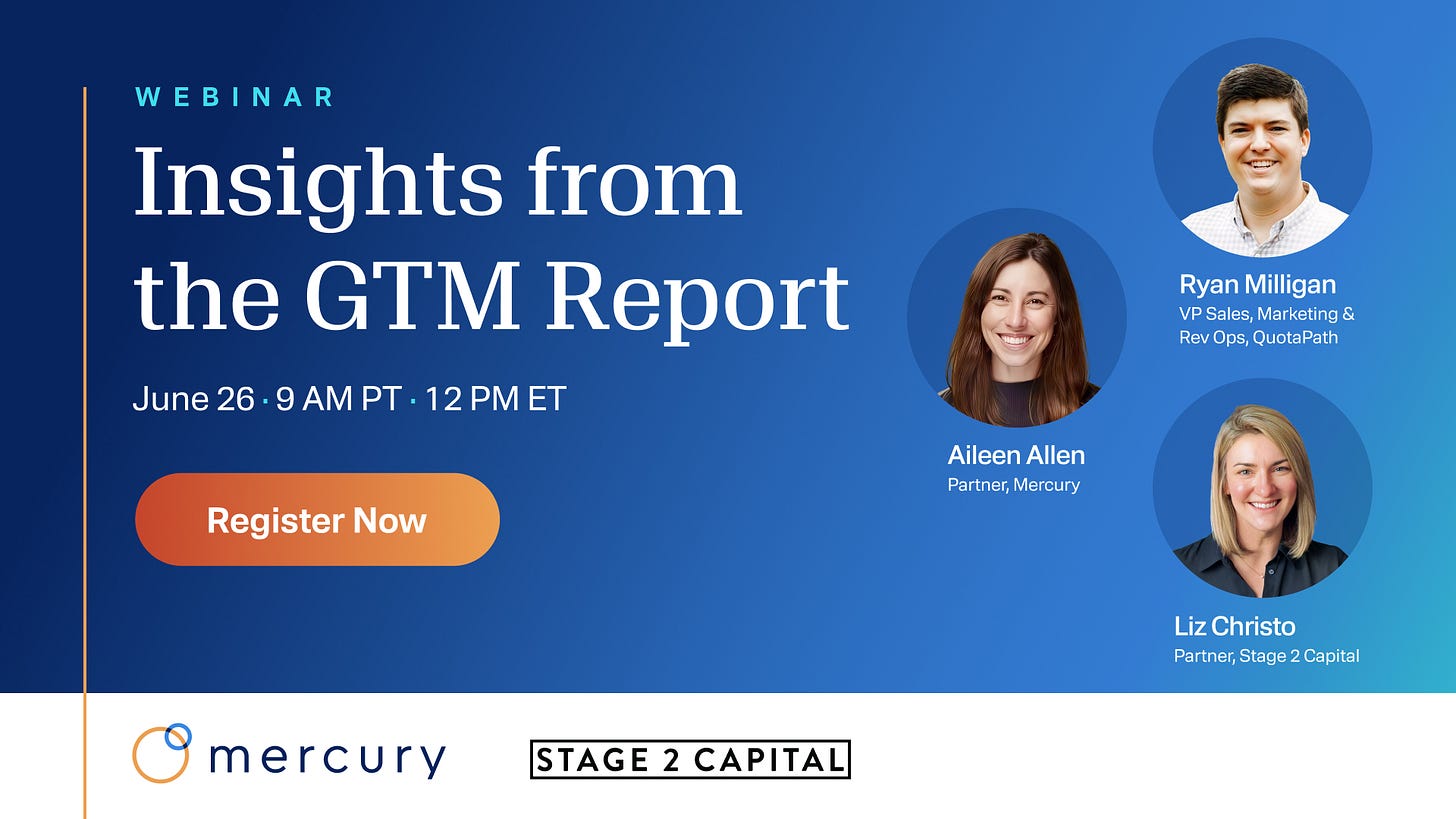What Early GTM Benchmarks are Telling Us
From pipeline coverage to CAC payback, here’s where 150+ startups stand, and what to do if you're off track.
As a board member and investor, I hear these questions all the time from early-stage teams: What’s good pipeline coverage? How do we stack up on CAC payback? Is our demo-to-close rate in the right ballpark? Is our bounce rate from the pricing page “normal”? How many BDRs should we hire?
So this week we’re mixing it up!
Instead of answering a question from the field, I’m taking a few minutes to reflect on the 2025 Early-Stage GTM Benchmarks report Stage 2 released last month in partnership with Mercury. Aileen Allen, an operator turned investor with deep experience in revenue leadership, led the charge on this effort, surveying 150+ startups and delivering an incredible report full of new insights like:
AI use is in full swing: 80% of teams leverage AI across the GTM function from research to enablement and more
Relationship and human-driven sales dominates: 71% of respondents have a sales-led GTM strategy
Value-based pricing is on the rise: ⅓ of companies align pricing with customer outcomes and value
So today, I’m digging in on a few of the topics that stood out to me and sharing some advice on where to go from here:
Pipeline Management: Quality over Quantity
We all know the rule of thumb: build 3-5x pipeline coverage to hit your number. But most teams aren’t reliably doing that. What we saw in the data:
Only 40% of companies had 4x+ coverage in Q1 2025.
High-performing teams were diligent about deal hygiene, routinely scrubbing low-quality opportunities out of the forecast.
Teams with active pipeline management (cross-functional pipeline/forecast meetings are key!) outperformed peers
What to do:
Use a ‘last activity’ rule: if there has been no customer activity in 30 days, force a conversation with the AE about why it’s still in the forecast.
Create exit criteria for each stage: clear deal signals to progress stages help keep pipeline clean. For example, to move a deal from Discovery to Proposal, you might require:
A confirmed business problem
Identified champion
Timeline for a decision
Verbal agreement on the evaluation process
Make disqualification a celebrated outcome: encourage AEs to close-lost deals early if they’re not real and refocus energy on deals more likely to close.
Close the loop with marketing: Are there deals that need to be tossed back into nurture? Are you seeing patterns, like certain verticals or buyer types consistently underperforming that should make you rethink your ICP?
CAC Payback: Reality Check Needed
Most early-stage companies say they are focused on efficiency, but in practice, we’re seeing payback creep well beyond what we would deem as reasonable. What we saw in the data:
CAC payback varies wildly depending on ACV and GTM model.
50% of respondents with <$5M ARR and 30% with $5-10M ARR reported CAC payback <12 mos, with no one in the $10-50M range coming in <12 mos. Efficiency spikes again at the 50M+ range.
What to do:
Audit how you calculate CAC: make sure it’s fully loaded and includes full GTM headcount, not just marketing spend.
Know the benchmarks for your business (generic advice SMB <6 mos, MM <12 mos, Ent <18 mos). If your payback is over 18 months, think twice before ramping headcount.
Measure CCAC payback monthly to see at what point the sum of gross profit per month surpasses the CAC for each monthly cohort of customers. A deep dive on this analysis can be found here, but the TL;DR is: 1) Calculate the CAC for each cohort of customers, 2) Measure how long it takes each cohort to break even on CAC, 3) Assess if the time to break even gets shorter or longer over time.
Whether you're trying to grow faster or just more efficiently, the 2025 GTM benchmarks offer a gut check on what “good” looks like.
If you want to hear more, join us next Thursday, June 26, at noon ET as Aileen Allen, Ryan Milligan and I break down the key findings. You can register for the webinar here.
Back to regular scheduled programming next week!





